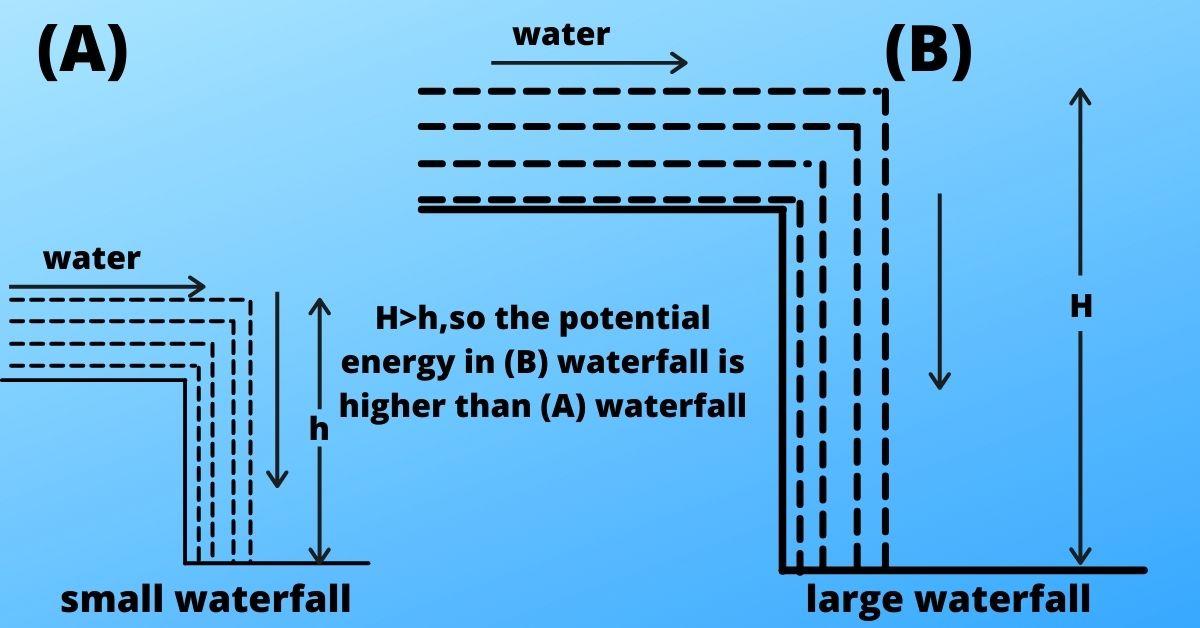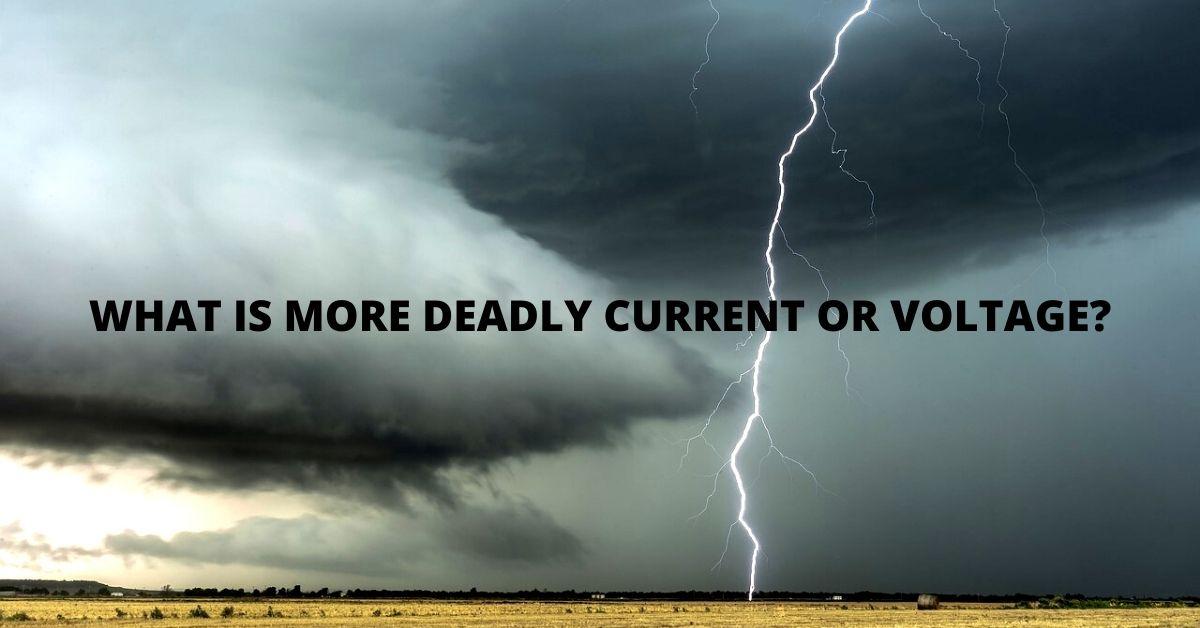Electricity has revolutionized the world completely. Electricity plays a key role in driving our modern technology. Without which our day to day life becomes next to impossible. In daily usage, sometimes the interaction with electricity is not happy at all. We often get shocks from the wall outlet or electrical devices etc. And, unfortunately, some of them are very dangerous that can cause severe injuries or even death also. So, here is the question, What is more deadly current or voltage?
The fundamental concept of current and voltage
You may have heard that a few milliamps can kill you. But this is one side of the answer.
To understand the exact answer you need to have a very clear idea about current and voltage and the relation between them.
Voltage
The voltage or potential difference is the required energy that drives the electron from one terminal to another terminal of a conductor. you may remember that in our childhood, we used to take the analogy of water levels to understand the voltage. In that analogy, water flows from the higher water level tube to the lower one. If both the water levels of the tubes are the same then simply there is no flow of water.
In the case of electricity, water molecules are replaced by electrons, and differences between water levels can be thought of as potential difference.
Volt
Volt is the SI unit of voltage or electric potential difference in the name of famous Italian scientist Alessandro Volta.
1 volt is defined as the energy consumption of one joule per electric charge of coulomb.
1v=1J/C
Current
Current is the amount of charge flowing per unit time. From the previous analogy, we can say that the amount of water flowing per unit time can be considered as current in the case of electricity.
Ampere
Ampere is the unit of current flow. It is named after the French mathematician and physicist André-Marie Ampère, also known as the father of electromagnetism.
1 ampere is defined as “the constant current which, if maintained in two straight parallel conductors of infinite length, of negligible circular cross-section, and placed 1 meter apart in vacuum, would produce between these conductors a force equal to 2 x 10^-7 newton per meter of length.” If you don’t like this type of definition then don’t bother with it, trust me without it you are still able to understand the rest of the post.
The relation between current and voltage
From the above two definitions, we can say that voltage is the cause and current is the effect. But, there has to be a relation between them.
Ohm’s law: Ohm’s law states that, if temperature, pressure and other external parameters remain unchanged, the current (I) between two points through a conductor is directly proportional to potential (voltage) difference(V) between those two points.
V varies as I.
Or, V=I x R, where R is a constant, called as resistance as it resists the flow of current.
Ohm’s law simply means the current will go higher if we increase voltage and goes lower if the current goes lower for a fixed resistance.
What is more deadly current or voltage?
So, finally back to the question, What is more deadly current or voltage? Obviously the answer is not so trivial.
You can not think about current without applied voltage. Yes, I completely agree that there are generally current ratings given by the health institutions for safety standards. But, that is not the whole story.
As I have said earlier, voltage and current are connected. So we can not think individually about them.
Let’s take an example,
We have,
Voltage (V)= Current (I) x Resistance (R)
So, Current (I)= Voltage (V) / Resistance (R)
Now, let’s say, 20 milliamps (mA)(1 milliamps=1/1000 amps) can be treated as a deadly shock to us. And the 10000 ohm(say) is the resistance of our body.
Hence, to reach 20 milliamps of current you need to have, 20 x (1/1000) x 10000= 200 V.
Similarly, there is a need for a certain voltage to achieve a fixed current over a resistance. So, to have just current ratings is not enough.
Actually, there is big or you may say the biggest factor too. Time plays a critical role in the interaction. If there is a huge current but the interaction time is just a few nanoseconds, then the interaction might not hurt.
Analogy
Imagine, you are going to take a bath beneath a waterfall. Now, if the amount of water ( thought as current) is very less but the waterfall is very high( think as voltage) then the falling water won’t hurt you.

On the other hand, if the height of the waterfall is low, but the amount of water flowing is huge then it can cause problems. And again, how much time you are inside the flow is also matter, so time is also a factor.
Safety Chart
Estimated Effects of 60 Hz AC Currents
| 1 mA | Barely perceptible |
| 16 mA | Maximum current an average man can grasp and “let go” |
| 20 mA | Paralysis of respiratory muscles |
| 100 mA | Ventricular fibrillation threshold |
| 2 Amps | Cardiac standstill and internal organ damage |
| 15/20 Amps | Common fuse or breaker opens circuit* |
*Contact with 20 milliamps of current can be fatal. As a frame of reference, a common household circuit breaker may be rated at 15, 20, or 30 amps.
This is a safety chart from “WORKER DEATHS BY ELECTROCUTION” from the U.S. DEPARTMENT OF HEALTH AND HUMAN SERVICES, clearly mentioning all the current ratings and estimated effects of 60 Hz ac current on a human body.
Here, you can clearly see that 20 mA is the minimum approximate current value that can cause death.
Conclusion
I think now you can answer the question: what is the more deadly current or voltage? It is current as well as voltage considering interaction time.
On a side note, I also clear this total discussion based on the sources you are using. If it is a constant current source, then you have to remember that your voltage will automatically increase or decrease over a fixed load (resistance) for your desired current value.
That’s it for this post, I hope I am able to clear your idea. If you still have any double feel free to comment below. Thank you.
what is more deadly current or voltage ?
It is current as well as voltage considering interaction time when it comes to what is more deadly current or voltage.
what is Ohm’s law?
Ohm’s law states that, if temperature, pressure and other external parameters remain unchanged, the current (I) between two points through a conductor is directly proportional to potential (voltage) difference(V) between those two points.

